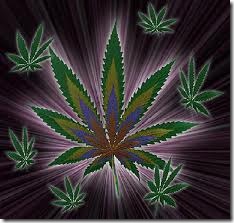Travis Kelly
Since the days of Cain and Abel, hemp has been one of the world’s largest and most versatile crops, used to make textiles, paint, soap, rope, building materials, fuel oil, protein supplements, and medicines. An acre of hemp produces far more paper than an acre of trees — and you would have to smoke an acre of it to get high, as industrial hemp, though similar in appearance to its close cousin, marijuana (cannabis), contains almost no THC.
Today, in only one industrialized nation in the world, is the cultivation of hemp illegal. You guessed it: Ours truly. And it makes as much sense as outlawing ALL mushrooms because some of them are psychoactive or poisonous. How this travesty came about in 1937 is a lesson in the collusion of big corporations with big government and big media to pervert the free market and stymie competition.
In the early 1930s, Henry Ford’s experimental biomass plant in Michigan extracted methanol, charcoal, tar pitch, and other distillates from hemp, demonstrating that it was an alternative to fossil fuels as an energy source, as well as a competitor to other petrochemical products then being introduced by the DuPont corporation, DuPont had a powerful ally in Washington — Secretary of Treasury Andrew Mellon, a banker who also had a controlling interest in the Gulf Oil Corporation.
Mellon appointed his loyal nephew, Harry Anslinger, as chief of the new Federal Bureau of Narcotics in 1932. Anslinger promptly began lobbying Congress to outlaw “marihuana,” using a series of hysterical propaganda stories run by newspaper tycoon William Randolph Hearst — that era’s Rupert Murdoch. Hearst owned vast timber lands in the Northwest that supplied the wood pulp for most of the American newspaper industry; DuPont chemicals were used to process that pulp. The “reefer madness” scare featured lurid, racist stories of “Mexicans and Negroes” going on murderous rampages while stoned; innocent white women seduced into ruin; teenagers going instantly insane after a puff; and other fearmongering fictions.
Anslinger told Congress that hemp — ALL hemp, whether smokable or not — was “entirely the Monster Hyde, the harmful effects of which cannot be measured.” The Marijuana Tax Act was rammed through Congress in secret committees controlled by DuPont allies. That same year, 1937, DuPont filed its patent on Nylon, which took over the textile and cordage markets that had been dominated by hemp. DuPont also supplied GM, which produced more than half of all American cars, with its petrochemical paints, varnishes, plastics and rubber, all of which could have been produced equally well from hemp. But no more. The competition had been criminalized.
The prohibition was suspended during WWII, with a Hemp for Victory campaign, then reinstated in 1955. Since then, our closest cousins, England, Australia and Canada (1998), have all legalized industrial hemp. China is the world’s number-one producer, exporting most of it to us — the world’s leading hemp importer — exacerbating our trade imbalance.
As global oil supplies continue to decline versus growing demand, and become harder to extract and import due to geological and political factors, domestic hemp could easily replace many petrochemical products with significant advantages.
Hemp is a renewable resource, one of the fastest growing and most productive plants on earth, yielding four crops and 25 tons of dry matter per hectare per year. It requires few pesticides and no herbicides. It is now being used as a building material, Hempcrete, and, combined with fiberglass and flax, to make body panels for automobiles. It has also proved excellent as a “mop crop” for cleaning up contaminated soil. In all these cases, hemp is carbon neutral or even carbon negative, scrubbing and sequestering CO2 from our warming atmosphere.
Several states have licensed the growing of industrial hemp — California, Hawaii, Kentucky, Maine, Maryland, Montana, North Dakota, Oregon, Vermont, and West Virginia — but have not yet grown a single plant due to continued resistance by the DEA, who is still stuck in 1930s “reefer madness” paranoia, despite now overwhelming evidence that hemp’s cousin, marijuana, is far less harmful than alcohol for both health and public safety. To grow industrial hemp, the DEA must issue a permit under the 1970 Controlled Substances Act — and it never does.
Colorado can join that roster on Nov. 6 by voting for Amendment 64. Eventually, we will budge the DEA from its archaic stupidity, end the virtual dictatorship of the petrochemical industry, and safeguard our national security by again realizing Thomas Jefferson’s maxim: “Hemp is of first necessity to the wealth and protection of the country.”
Travis Kelly is a web/graphic designer, writer and cartoonist in Grand Junction. See his work or contact him at www.traviskelly.com.

